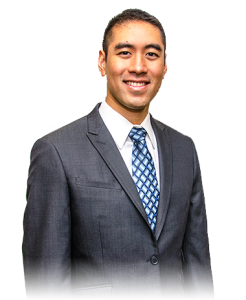Pain-Management expert Kaliq Chang with Atlantic Spine Center offers tips to keep the spine healthy.
WEST ORANGE, N.J. (PRWEB) December 14, 2018
When it comes to neck or back pain, just a little needle may do you. At least, that’s often the case for alleviating the chronic, gnawing pain caused by degenerating or damaged discs, says Kaliq Chang MD, of the New Jersey-based Atlantic Spine Center.
As a minimally-invasive, conservative option for bringing his patients relief, Dr. Chang injects natural materials (biologics) — or, on rarer occasions, long-lasting steroids — directly into an offending disc through a thin needle, which has been inserted under X-ray guidance and local anesthetic – an approach known as intradiscal injection.
Biologics include platelet-rich plasma (PRP) obtained from a patient’s own blood or stem cells harvested from bone marrow or adipose (fat) tissue. Stem cells are “primitive” cells that can encourage and stimulate regeneration of the collagen and restore disc height when injected into a damaged spinal disc.
“Use of natural products like PRP to treat disc-related disorders and pain is proving much more reliable than injection of steroids and other medications that lack the regenerative and restorative effects of biologics,” Dr. Chang says.
In fact, a March 2018 study in the Journal of Spine Surgery indicates disc-injection of PRP is “evolving as a powerful [new] therapy for the treatment of discogenic back pain.” PRP offers “exciting prospects for treating degenerative disc disease and other musculoskeletal disorders,” researchers say.
Additional clinical data suggest that direct injection of growth agents like hormones also can stimulate growth within cells and promote relief in spine-pain sufferers
“Different patients have different responses to treatment,” he says. “We do not know how successful an intradiscal injection will be until a patient has undergone the procedure. Studies have shown intradiscal injection to be an efficient alternative for those who want to avoid surgery.”
A patient may not feel the effects of an injection for several days after the treatment, with optimum relief occurring a week or more following the procedure, he says.
Chronic spinal pain, especially in the lower back, is a leading cause of disability, with significant health and socioeconomic impact, according to the Centers for Disease Control and Prevention. Much of that pain is attributed to degenerative disc disease, which becomes increasingly prevalent with advancing age. Spinal discs, located between the vertebrae and serving as shock absorbers, tend to lose water content and become brittle as a person ages.
Not all deteriorated spinal discs cause chronic pain, but degenerative disc disease can initiate a cascade of physical events that ultimately irritate the nerve fibers surrounding the disc and lead to complications like spinal stenosis, a compression of the spinal canal and nerve roots in the canal. That’s because the widespread nature of chronic spinal pain – what Dr. Chang calls an “epidemic” in this country and globally – has scientists and clinicians continuing the search for more advanced treatments, such as PRP and stem-cell therapies.
“We look forward to newer and increasingly effective biomolecular and cellular therapies for successful relief of disc problems,” says Dr. Chang. “These, along with ongoing, pre-clinical work in tissue engineering, portend an exciting future in the treatment of chronic back and neck pain. Of course, more clinical investigation will be required to determine reliability and safety of these treatments before they become accepted into widespread use.”
Naturally, the best treatment for back and disc pain is prevention. That’s why Dr. Chang offers these tips to reduce risk of spinal problems:
- Be active. Participate in exercises that stretch joints and strengthen back and abdominal muscles. Exercise aids healthy bone growth.
- Stop smoking; reduce consumption of alcohol. Nicotine and alcohol can damage bones.
- Maintain a healthy diet, with ample fruits and vegetables.
- Practice good posture when sitting or standing – back and shoulders straight. Follow proper techniques for lifting heavy or cumbersome objects; avoid strenuous twisting of the spine to limit wear and tear on the discs.
- Talk to a physician about Treatments to help prevent the progression of osteoporosis and disc degeneration.
Atlantic Spine Centeris a nationally recognized leader for endoscopic spine surgery and pain management with several locations in NJ and NYC. http://www.atlanticspinecenter.com, http://www.atlanticspinecenter.nyc
Kaliq Chang, MD, is an interventional pain management specialist board-certified in anesthesiology at Atlantic Spine Center.

